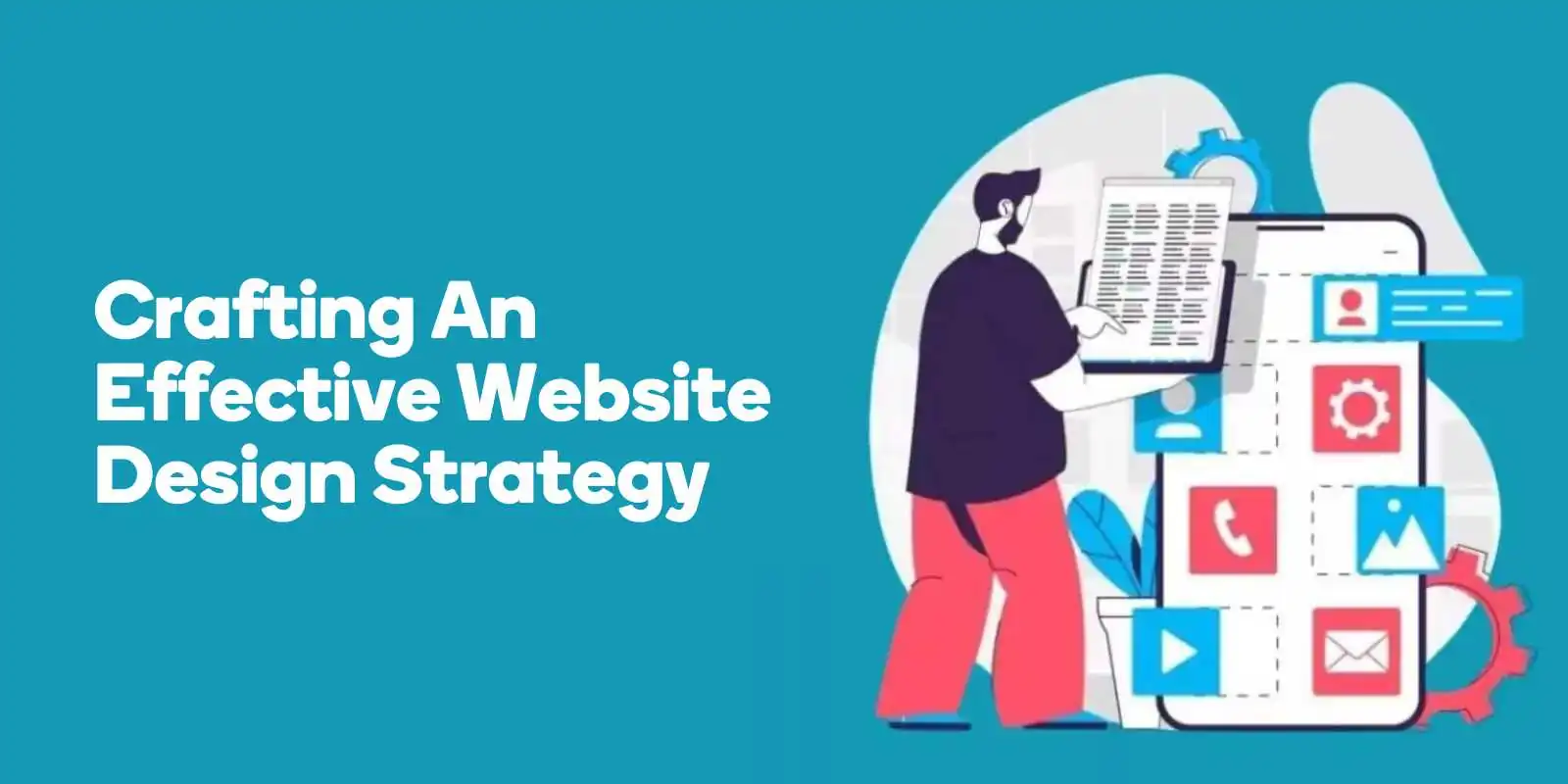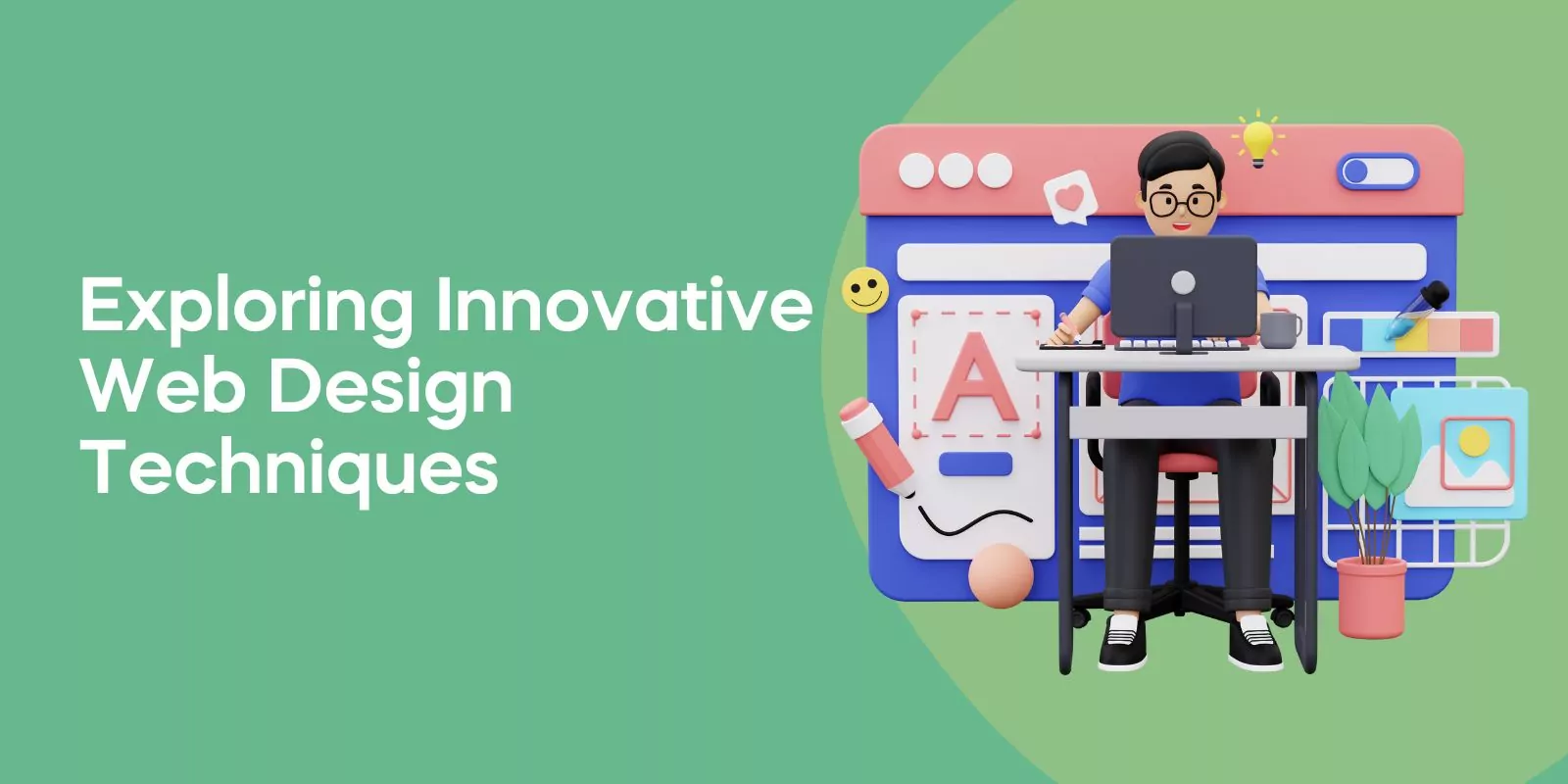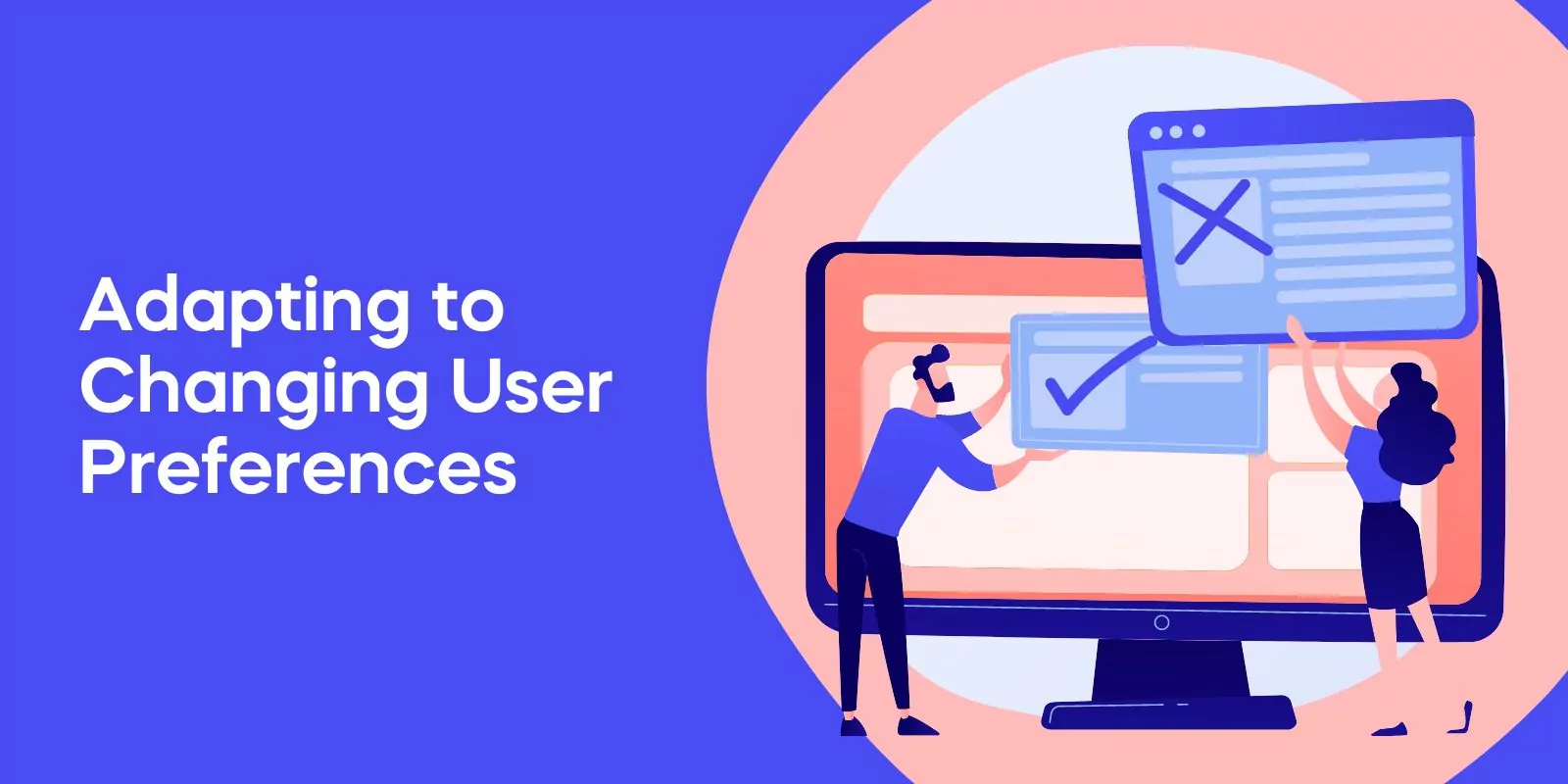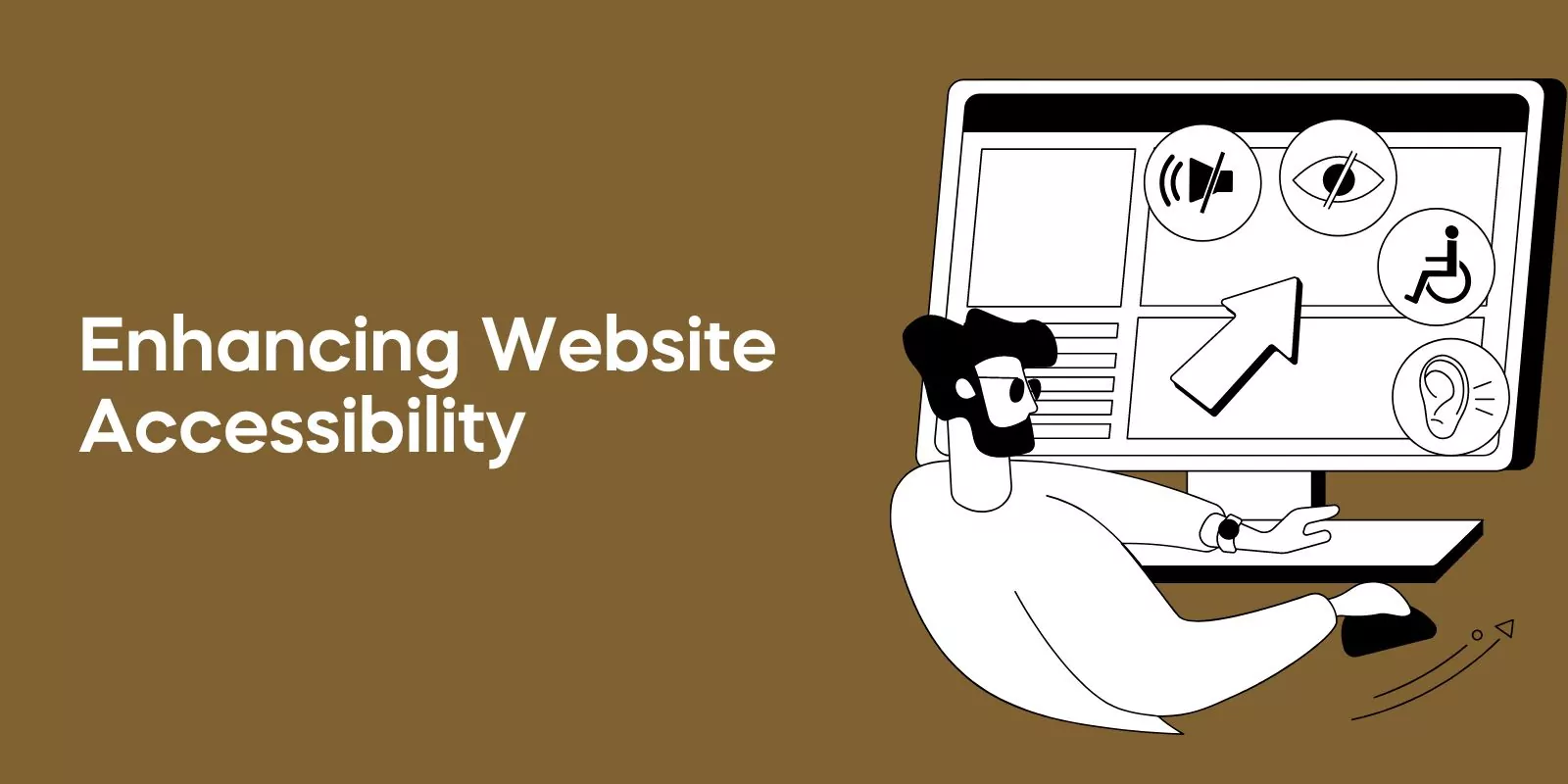This blog post will guide you through the essentials of creating a dynamic, user-friendly, and results-driven website, keeping your digital presence at the forefront of innovation.
Understanding Your Target Audience
A key aspect of website strategy is understanding your target audience.
Knowing who your potential customers are and their preferences helps tailor your web design to their tastes and habits, ultimately increasing engagement and conversions.
To determine your target audience, you can analyze existing customer data or conduct surveys. Another effective method is to create buyer personas – fictional representations of your ideal customers based on demographic data and lifestyle preferences.
An inadequately designed website could result in high abandonment rates and difficulty connecting with potential customers.
By conducting research on your competitors and analyzing their web design strategies, you can gain valuable insights into how your target audience interacts with websites. This information can then be used to implement design elements effectively, ensuring a better user experience.
Interactive elements, such as quizzes, polls, and games, can also be employed to engage your target audience and gather valuable data about their preferences and behaviors.
By implementing these features, you not only increase the likelihood of site visitors becoming customers, but also gather useful information to further refine your website strategy.
Defining Clear Website Goals
Establishing specific goals and objectives for your website design strategy is essential for success.
Clear goals enable you to evaluate whether you are achieving your desired outcomes and identify any discrepancies or deficiencies in the process that need to be addressed.
These goals could include increasing conversions, improving user experience, or boosting brand awareness.
A comprehensive strategic web design strategy should take into account goals, communication, digital marketing strategy, branding, design elements, and credibility.
Synchronizing your website design strategy with your overall web strategy is crucial for realizing the full potential of your online presence.
Utilizing keyword research tools can help identify relevant keywords to target, ultimately improving your website’s search engine rankings.
Incorporating the web design process and top web design strategies ensures a cohesive and effective online presence.
When developing a website strategy, it is important to define your target audience, set goals, devise a branding strategy, and leverage keyword research and search engine optimization (SEO) to optimize content.
By doing so, you create a solid foundation for your website’s success and ensure that your online presence aligns with your organization’s overall objectives and site strategy.
Integrating Brand Strategy with Web Design
Incorporating brand strategy into your web design is essential for creating a cohesive online presence and building successful websites.
Your brand strategy should consider aspects such as mission, unique selling proposition (USP), and visual identity.
One approach to integrating brand strategy with web design is utilizing the StoryBrand framework, which can help create effective website content and guide the design process.
After defining your brand persona, consider website characteristics that reflect your brand’s personality and align with your web design strategies.
Establishing a distinctive identity fosters trust among potential customers who may be skeptical due to the uncertain origin of the product.
Storytelling techniques can also be employed to establish an emotional connection with the audience and build a strong brand.
For example, Mailchimp’s Courier magazine serves as an excellent example of effective brand storytelling.
Displaying customer testimonials, case studies, and reviews on your website can help create a sense of reliability and trust with prospective customers.
By integrating your brand strategy with your web design, you ensure that your website not only looks professional, but also effectively communicates your brand’s unique value proposition to your target audience.
Prioritizing User Experience for Website Design Strategy
User experience is a crucial aspect of web design strategy, as it ensures that your website is easy to navigate, understand, and engage with for all users.
One key component of user experience is website navigation, which should be clear, consistent, and intuitive to facilitate a smooth browsing experience.
Principles of navigation optimization include structuring content, using explicit and succinct labels, positioning navigation in a consistent and prominent location, and regularly testing and evaluating the navigation.
An easy-to-navigate website ensures that users can locate the required information with minimal effort on each web page.
This ultimately leads to higher user satisfaction and increased likelihood of conversions. To achieve this, consider employing techniques such as drop-down menus, clear headings, and a well-organized site map to guide users through your website pages.
In addition to navigation, responsiveness and accessibility across different devices are vital for a positive user experience.
With the growing number of users accessing websites through mobile devices, ensuring that your website design is responsive and adaptable to various screen sizes is key to keeping your audience engaged and satisfied.
Implementing SEO Best Practices
Search engine optimization (SEO) plays a significant role in website design strategy, as it helps your website rank higher in search engine results, making it more visible to potential customers.
A crucial aspect of SEO is keyword research, which allows you to identify relevant keywords to target and incorporate them into high-quality content that appeals to both search engines and users.
The recommended keyword density for website content is once or twice for every 100 words. Overusing keywords in your content can lead to search engine penalties for keyword stuffing, which can negatively impact your website’s rankings.
To avoid this, focus on creating valuable and informative content that naturally incorporates your target keywords, rather than trying to artificially inflate their frequency.
In addition to keyword research, other SEO best practices include optimizing meta tags, creating mobile-friendly sites, and ensuring that your website loads quickly and efficiently.
By implementing these techniques, you can boost your website’s visibility in search engines, attract more traffic, and ultimately increase conversions.
Utilizing Engaging Content and Visuals
Incorporating engaging content and visuals in your web design strategy is crucial for capturing and maintaining your audience’s attention.
Video, for example, is a vital component of website strategy, as it plays a significant role in achieving marketing success in the digital age. When devising a video strategy for your website, consider what types of videos need to be produced and on which pages they will be hosted.
Another way to enhance user engagement is through the use of mood boards, which are tools used to compile various creative elements for planning a new project.
Mood boards can help guide the overall design direction and ensure that your website’s visuals align with your brand strategy and target audience preferences.
Micro-interactions and micro-animations are additional design elements that can increase user engagement and interactivity on your website.
These small animations are triggered when users hover over buttons or certain sections of the site, providing a sense of depth and materiality to the page.

Award-Winning
Sales Funnel & Website Expert
Ready for Revenue – Not Just “Traffic”?
- Websites that Work: Clean, fast, built to convert – no design fluff.
- Funnels that Sell for You: Step-by-step paths that turn clicks into paying customers.
- SEO That Hunts Buyers: Show up exactly when prospects reach for their wallets.
By incorporating these engaging elements, you create a more immersive and interactive experience for your audience, which can translate into higher user satisfaction and increased conversions.
Leveraging Calls-to-Action (CTAs)
Calls-to-action (CTAs) are an essential component of web design strategy, guiding users to take specific actions such as making a purchase or subscribing to a newsletter.
Effective CTA placement and design can significantly impact conversions and engagement on your website.
For example, strategically placing CTAs on a landing page so they fit seamlessly into the page copy while maintaining the message and providing an incentive to purchase is crucial for success.
In addition to placement, the design of your CTAs plays a vital role in capturing user attention and encouraging action.
Utilizing eye-catching colors, clear fonts, and concise messaging can make your CTAs stand out and prompt users to click. It is also essential to ensure that no landing page is missing CTAs, as this can lead to missed opportunities for conversions.
Interactive elements such as quizzes, polls, and games can also be employed to boost user engagement and guide them toward specific actions.
By incorporating clear and compelling CTAs throughout your website, you can guide users toward desired actions and ultimately increase conversions and engagement.
Analyzing and Adjusting Your Website Design Strategy
Monitoring website performance is crucial for making informed decisions and optimizing your web design strategy.
By tracking various metrics such as monthly website visitors, monthly unique visitors, bounce rate, and source of visitors, you can evaluate your website’s performance and identify areas for improvement.
Tools like Mailchimp offer analytics capabilities that can help you gauge the effectiveness of your website and marketing campaigns.
By analyzing this data, you can make data-driven adjustments to your web design strategy and ensure that your website remains relevant and effective over time.
A/B or multivariate testing is another valuable tool for optimizing your web design strategy. These tests allow you to evaluate different versions of content structures to determine which is most effective and profitable for your website.
By continuously analyzing and adjusting your strategy based on data and user feedback, you can ensure that your website remains responsive to the evolving needs and preferences of your target audience.
Exploring Innovative Web Design Techniques
Staying ahead of the curve in web design involves exploring innovative techniques and trends. Cutting-edge features such as parallax scrolling, animated cursors, and interactive fonts are gaining traction in the industry.
Parallax scrolling, for example, is a technique where the background and foreground elements of a website move at different speeds when the user scrolls, creating a sense of depth and capturing user attention.
Animated cursors and interactive fonts offer additional ways to enhance user engagement and create a more immersive experience on your website.
However, it is crucial to consider the potential drawbacks of these innovative techniques, such as decreased website performance on mobile devices and accessibility issues for certain users.
By staying informed about the latest web design techniques and incorporating them into your website strategy, you can create a more engaging and interactive experience for your audience.
However, it is essential to strike a balance between innovation and usability, ensuring that these advanced features do not compromise the overall user experience.
Ensuring Mobile Responsiveness
With the growing number of users accessing websites through mobile devices, it is crucial to ensure that your web design is responsive and adaptable to various screen sizes.
Mobile-responsive web design enables content, look, and feel to be quickly and easily adapted across any device, providing users with a more optimized user experience and enhanced search engine rankings.
When customizing your website for mobile devices, consider why someone would access your website on a mobile device and what would appeal to them.
Evaluating how the current website experience accommodates their usage can help you identify opportunities for improvement and create a more seamless browsing experience for mobile users.
In addition to mobile responsiveness, ensuring that your website is accessible and user-friendly across all devices is key to keeping your audience engaged and satisfied.
Prioritizing user experience and adopting mobile-first design principles can help you cater to the growing number of mobile users and maintain a competitive edge in the digital landscape.
Adapting to Changing User Preferences
Staying up-to-date with evolving user preferences and trends is essential for maintaining the relevance and effectiveness of your web design strategy.
Current user preferences in web design focus on responsive design, serverless architecture, optimized voice search, dark mode standardization, and increased attention to cybersecurity.
Additionally, minimalist design is gaining traction, with some designers experimenting with removing images and prominent navigation sections.
To ensure your web designs are up to date, focus on creating designs that are responsive, secure, and optimized for voice search.
Embrace minimalist design and experiment with removing images and prominent navigation sections to create a cleaner and more streamlined user experience.
By continuously monitoring user preferences and adapting your web design strategy accordingly, you can ensure that your website remains relevant and effective in the ever-changing online landscape.
Staying informed about the latest trends and preferences can help you make data-driven decisions and maintain a competitive edge in the industry.
Balancing Simplicity and Customization for Website Design Strategy
Striking a balance between simplicity and customization in web design is essential for ensuring an intuitive user experience without sacrificing personalization and brand identity.
Current trends in web design focus on simplicity, with a transition away from infographics and towards cleaner, more streamlined designs.
Custom web design can be highly beneficial for your company, allowing you to create unique website experiences that cater to your target audience’s preferences.
However, it is crucial to consider inclusive design practices, such as implementing mobile-first indexing and customizing fonts for dark mode operations and screen readers, to ensure your website is accessible to a wide range of users.
By balancing simplicity and customization, you create a user-friendly website that caters to your audience’s preferences while maintaining a unique persona representing your brand.
This balance ultimately leads to a more engaging and effective website that drives conversions and builds brand loyalty.
Enhancing Website Accessibility
Creating accessible websites is essential, as everyone can experience disabilities at some point in time.
Ensuring that your website caters to users with disabilities not only demonstrates social responsibility, but also opens your website to a broader audience.
Utilizing clean CSS can enhance website accessibility, aiding user navigation and comprehension, making the website more inclusive for all users.
However, some design trends, such as neumorphism, can pose challenges for users with visual impairments and can be difficult to read in brighter environments.
To create a more accessible website, consider avoiding design trends that hinder accessibility and focus on implementing best practices that cater to users with disabilities.
By prioritizing website accessibility, you create a more inclusive online experience for your users and demonstrate your commitment to social responsibility.
This focus on accessibility not only benefits your users, but also contributes to the overall success of your website and business.
Frequently Asked Questions
What are web design strategies?
Developing a strategic web design involves understanding your audience, assessing the features necessary to meet the goals of your business, and choosing the most effective platform for implementation. It requires careful planning to create an online presence that builds trust with customers and showcases your company’s strengths and unique offerings.
A successful web design strategy will result in a powerful website that helps you reach your target audience.
What are the 5 main design strategies?
The five main design strategies are Discover, Design, Develop, Deliver, and Debug. These strategies allow a designer to identify user needs and develop the best solution for them, create a prototype, test for quality assurance, and make any necessary changes before releasing the product into the marketplace.
By following these steps, designers can ensure that the end product will meet the customer’s needs and be ready to compete in the marketplace.
What are the 7 guidelines for a successful web design?
A successful web design should include usability and accessibility for users, intuitive navigation, visually appealing design, valuable content, fast loading times, SEO optimization, and security.
Following these guidelines will help ensure your website is attractive, efficient, and effective.
What are the 5 basic principles of web design?
The key to successful web design lies in the five basic principles of consistency, usability, visual hierarchy, color scheme and responsiveness. Achieving a balance between these fundamentals will create an aesthetically pleasing and intuitive website experience for users.
Utilizing these essential elements ensures that your website stands out and meets the user’s needs.
What are some effective ways to determine my target audience for my website design strategy?
These are all effective ways to determine your target audience for your website design strategy. Researching customer data and creating buyer personas can help you get an in-depth understanding of your customers, while surveys can provide a snapshot of current preferences.
Furthermore, leveraging social media analytics can give you valuable insights into who is engaging with your content online.
Conclusion
In conclusion, crafting an effective website design strategy involves understanding your target audience, defining clear goals, integrating brand strategy, prioritizing user experience, implementing SEO best practices, utilizing engaging content and visuals, leveraging CTAs, analyzing and adjusting your strategy, exploring innovative web design techniques, ensuring mobile responsiveness, adapting to changing user preferences, balancing simplicity and customization, and enhancing website accessibility.
By following the insights and recommendations provided in this blog post, you can create a dynamic, user-friendly, and results-driven website that keeps your digital presence at the forefront of innovation.
Stay ahead of the curve and make your website truly shines.












